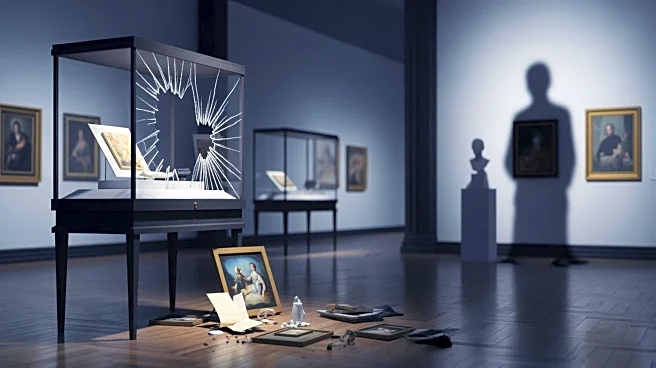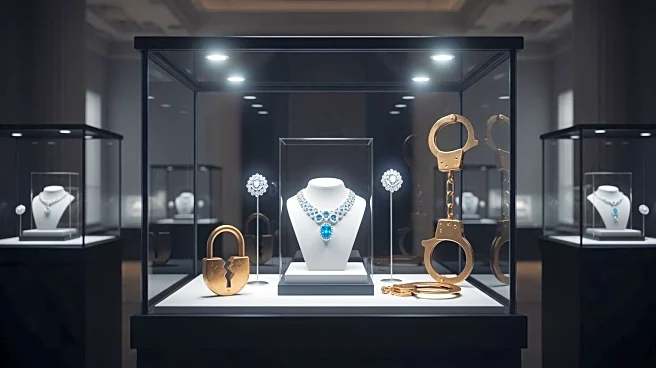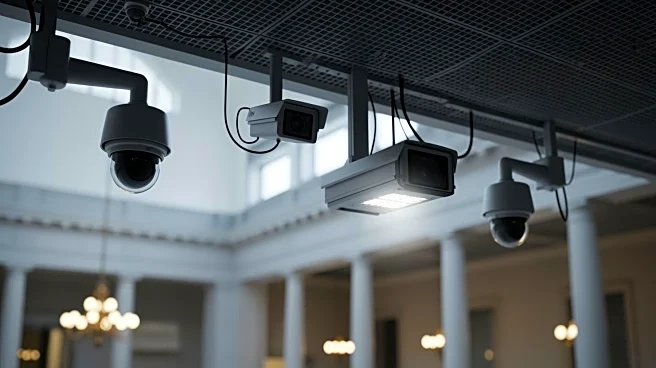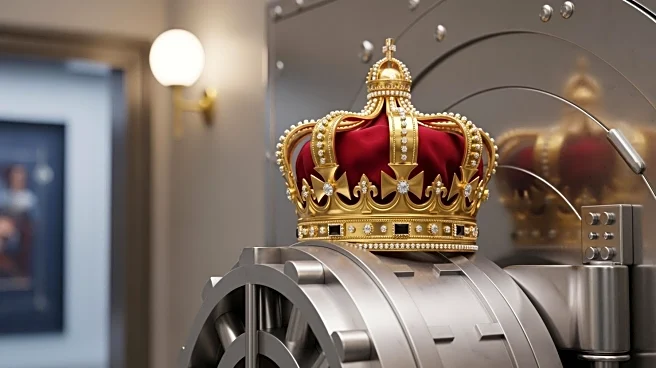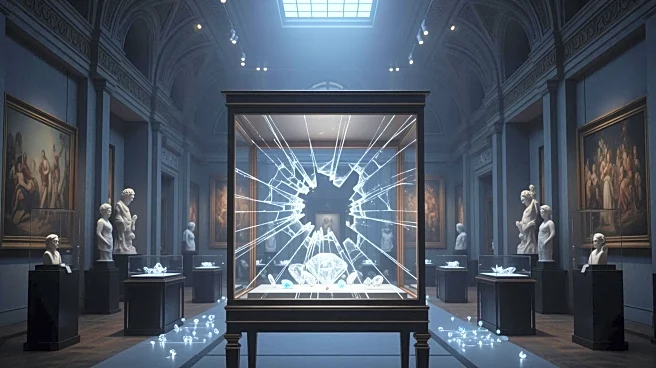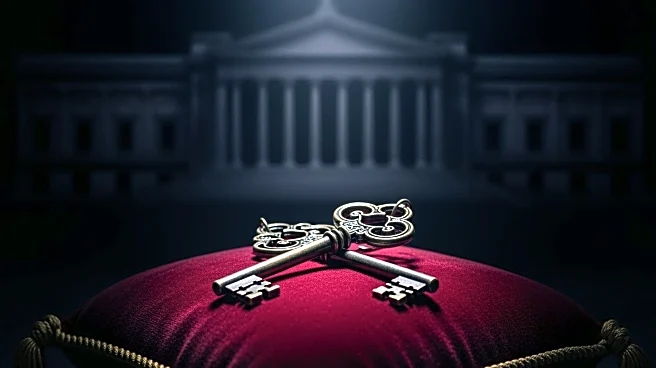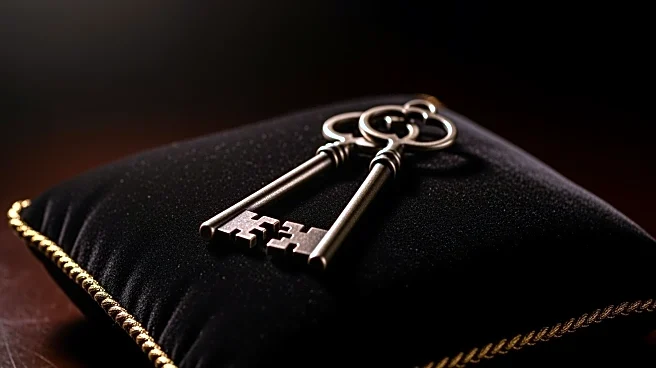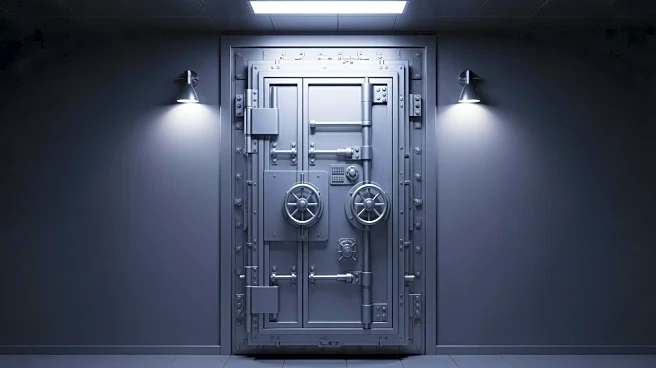What's Happening?
French detectives have uncovered evidence suggesting that the recent robbery at the Louvre Museum was an inside job. The heist, which involved four masked men using a chainsaw to break into the museum, resulted in the theft of eight pieces of France's
crown jewels valued at approximately $102 million. Investigators have found digital forensic evidence indicating that museum employees were in contact with the gang members responsible for the raid. This included cooperation from a security guard who provided sensitive information about the museum's security systems. The burglars executed the operation in just seven minutes, using a crane to access a balcony and escape on motorbikes. Despite the arrests of two suspects, none of the stolen jewels have been recovered.
Why It's Important?
The revelation of an inside job at one of the world's most famous museums highlights significant security vulnerabilities in cultural institutions. This incident could lead to increased scrutiny and potential overhauls of security protocols in museums globally. The theft of such high-value items not only represents a substantial financial loss but also a cultural one, as these jewels are part of France's national heritage. The involvement of museum staff in the heist raises questions about employee vetting and monitoring processes. The case underscores the need for enhanced security measures and could influence policy changes in museum operations worldwide.
What's Next?
The investigation is ongoing, with French authorities continuing to search for the remaining suspects and the stolen jewels. The Louvre has already taken steps to secure its most valuable items by transferring them to the Bank of France. As the investigation progresses, there may be further arrests and potential recovery of the stolen items. The incident is likely to prompt other museums to reassess their security measures to prevent similar occurrences. Additionally, the French government may consider implementing stricter regulations and oversight for museum security protocols.
Beyond the Headlines
This incident raises broader ethical and legal questions about the responsibilities of cultural institutions in safeguarding national treasures. It also highlights the potential for insider threats in various sectors, not just in museums. The case may lead to discussions about the balance between public access to cultural heritage and the need for stringent security measures. Furthermore, the involvement of museum staff in such a high-profile crime could lead to a reevaluation of employment practices and background checks in sensitive positions.
